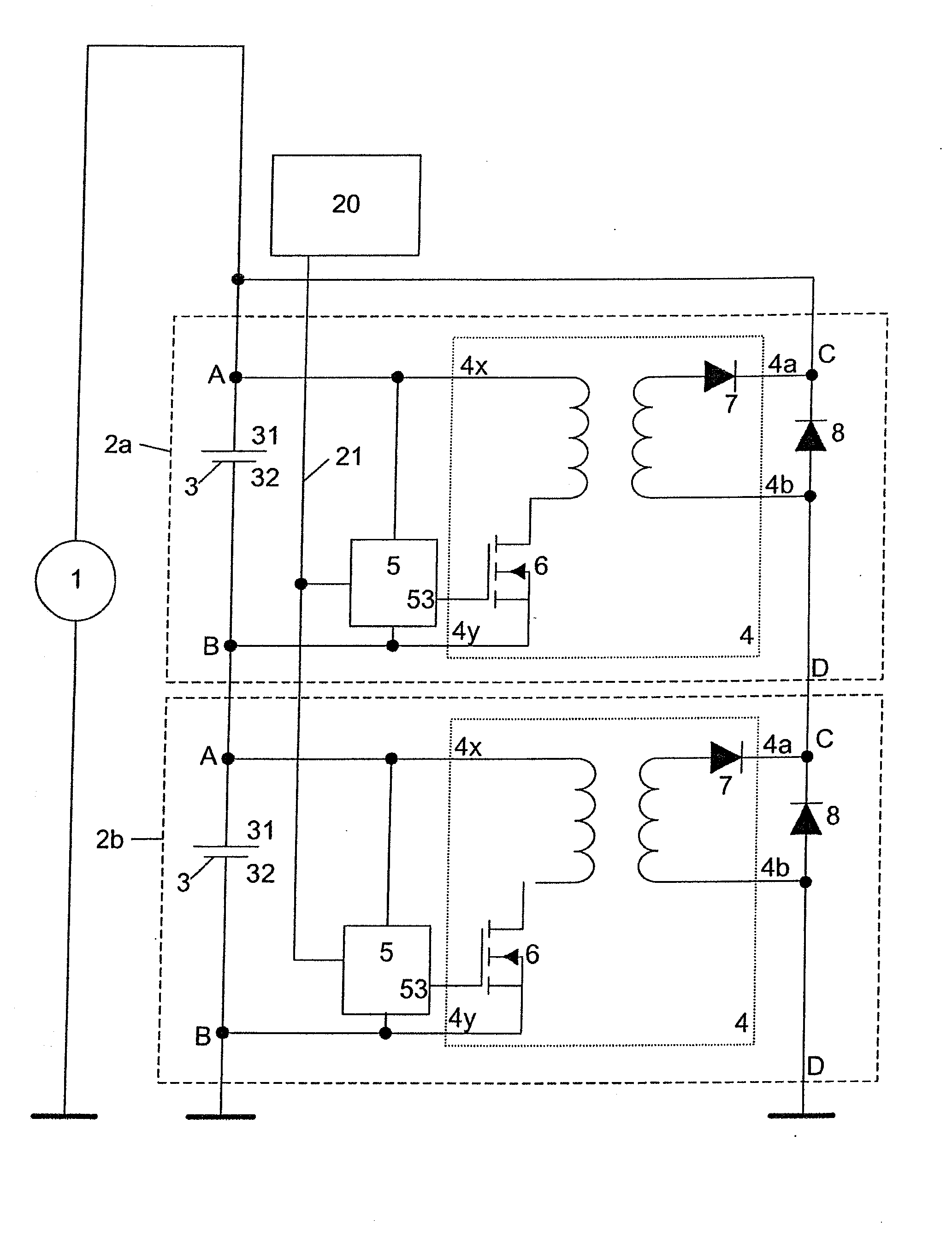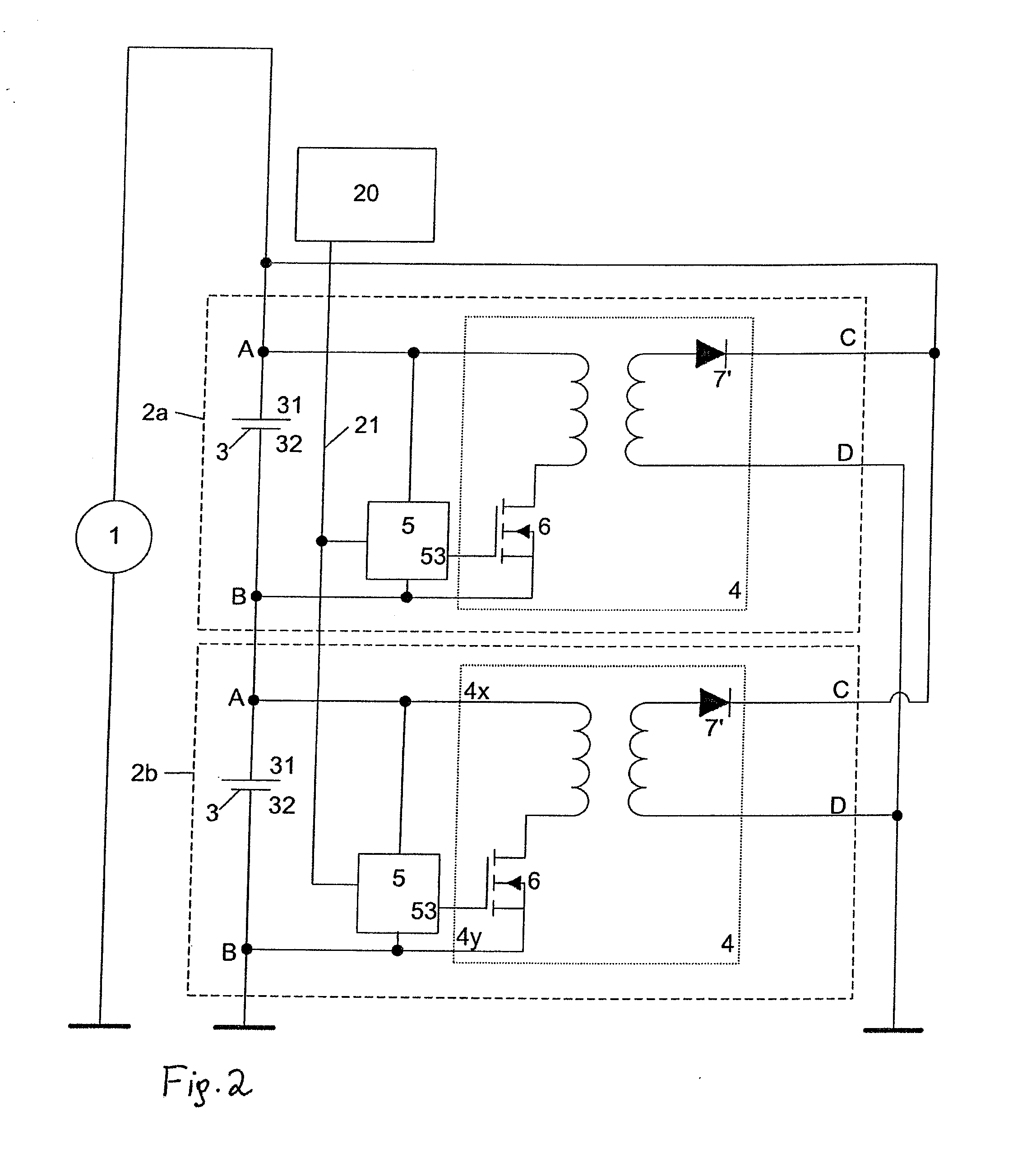Battery Module
a battery module and module technology, applied in battery/fuel cell control arrangement, process and machine control, instruments, etc., can solve the problems of large number of cables or wires, labor-intensive and cost-intensive cable or wire harness routing, and the overcharging of individual energy stores can occur, so as to reduce the overall weight or the overall mass of the arrangement can be enormously reduced, and the cable routing is extremely simple.
- Summary
- Abstract
- Description
- Claims
- Application Information
AI Technical Summary
Benefits of technology
Problems solved by technology
Method used
Image
Examples
Embodiment Construction
[0037]In FIG. 1 there is depicted an embodiment of the invention. The circuit comprises two battery modules 2a, 2b which are connected to a charging voltage source 1. Each of the battery modules 2a, 2b comprises an energy store 3, for instance in the form of an accumulator, a battery, or a capacitor, etc. Each of the battery modules 2a, 2b comprises a first connection A and a second connection B. Furthermore, each of the battery modules 2a, 2b comprises a first compensation connection C as well as a second compensation connection D. The energy store 3 is connected at the positive connection 31 of the energy store 3 to the first connection A and at the negative connection 32 of the energy store 3 to the second connection B. Each of the ends of the series connection of the energy stores 3 will be connected to one of the poles of the charging voltage source 1, respectively, or to one connection of a consumer load, respectively. In doing so, by the charging voltage source 1 the voltage ...
PUM
 Login to View More
Login to View More Abstract
Description
Claims
Application Information
 Login to View More
Login to View More - R&D
- Intellectual Property
- Life Sciences
- Materials
- Tech Scout
- Unparalleled Data Quality
- Higher Quality Content
- 60% Fewer Hallucinations
Browse by: Latest US Patents, China's latest patents, Technical Efficacy Thesaurus, Application Domain, Technology Topic, Popular Technical Reports.
© 2025 PatSnap. All rights reserved.Legal|Privacy policy|Modern Slavery Act Transparency Statement|Sitemap|About US| Contact US: help@patsnap.com



